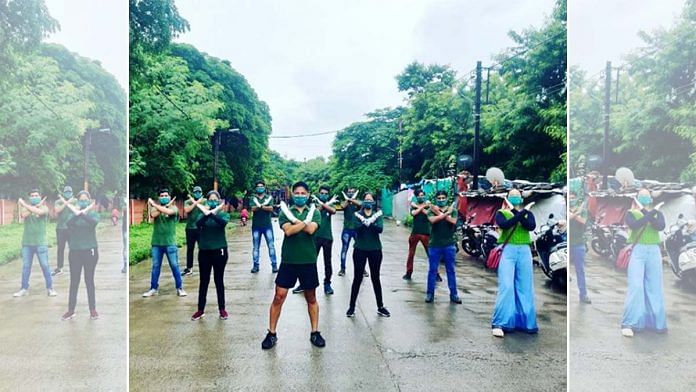New Delhi: The coronavirus pandemic and the subsequent lockdown halted the lives of many. While hunger was already a pressing issue in India, its severity increased manifold with widespread job losses and the migrant exodus in the last five months.
Many organisations have come forward to support the destitute, but Mission 30 Million — an initiative by the Robin Hood Army who describe themselves as “a volunteer based, zero-funds organization that works to get surplus food from restaurants and the community to serve less fortunate people” — turned out to be the largest food relief effort carried out by civil society to fight Covid.
The organisation’s aim was to serve 30 million people across 10 countries — including India, Bahrain, Botswana, Malaysia, Nepal, Uganda, Sri Lanka and Pakistan — by bringing together the “food industry, corporates, media houses and 60,000+ Robins”. While it didn’t exactly reach its goal, the initiative, which ran from 1 July to 16 August, served 23.2 million people in eight countries — with zero corporate or government funding.
Also read: How a small Delhi group helped over 4,200 migrant workers reach home in UP, Bihar, Jharkhand
How the Robin Hood Army works
The initiative began six years ago when founder Neel Ghose and a few friends fed 150 homeless people in Delhi. In 2014, the army was just 2,314 Robins strong across eight cities. In 2016, it moved across international borders and set up the Robin Hood Academy — “a feeder program where Robins teach and enable hundreds of street children to pursue primary education through a structured curriculum”. Today, that number stands at more than 58,400 in over 182 cities.
“Using a hyperlocal model, they collect excess food and give it to those who need it. But every community has their own Refood chapter. I realised it was something that can be very easily done in India, where the need would be much more,” Ghose explained in an interview to The Guardian. In Delhi and NCR alone, more 30 restaurants have partnered with them, he said.
Wedding season is an added boon for the RHA and the people they serve. According to a report, India sees an estimated 10 million weddings annually, in which 10 to 20 per cent of the food served goes waste — a $14 billion loss. Taking advantage of the situation, four RHA volunteers once used excess food from just one wedding in Hyderabad and fed roughly 970 people.
In 2019, India ranked 102nd out of 105 countries on the Global Hunger Index, falling behind Pakistan, Nepal and Bangladesh, and also features “among 45 countries that have serious levels of hunger”.
Also read: In Covid battle, this ‘army’ of volunteers is helping senior citizens, others stuck at home






